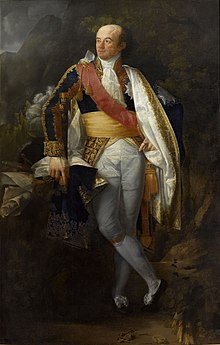Philippe Augustin Hennequin

Philippe Augustin Hennequin ([ɑ̃ˈkɛ̃]) (born August 10, 1762 in Lyon , † May 12, 1833 in Leuze-en-Hainaut , Hainaut ) was a French painter .
Hennequin, a pupil of Jacques-Louis David , received the grand prize in painting and then went to Italy for a long time, from where, persecuted by the papal government during the French Revolution, he found it difficult to go to France, only to go to prison in Lyon to wander, which he escaped only by a happy accident immediately before the mass execution (1794).
Then arrested in Paris as well, after his liberation he now lived on art. He justified his reputation by an Orestes persecuted by the Furies (1800, in the Louvre) and his picture of August 10th, depicting the triumph of the French people.
Later on, Hennequin was one of the most ardent glorifiers of Napoleon I's triumphs . After the fall of the empire, he settled in Liège. Then he painted his largest picture: the 300 citizens of Franchemont , who fell to the last man in the defense of the city. Hennequin died on May 12, 1833 in Leuze near Tournai as director of the local art school.
| personal data | |
|---|---|
| SURNAME | Hennequin, Philippe Augustin |
| BRIEF DESCRIPTION | French painter |
| DATE OF BIRTH | August 10, 1762 |
| PLACE OF BIRTH | Lyon |
| DATE OF DEATH | May 12, 1833 |
| Place of death | Leuze-en-Hainaut |